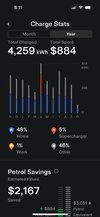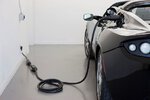- Joined
- 20 July 2021
- Posts
- 12,719
- Reactions
- 17,678
'Not-ESG Friendly': New Panasonic EV Battery Plant In Kansas To Be Powered By Coal
'Not-ESG Friendly': New Panasonic EV Battery Plant In Kansas To Be Powered By Coal | ZeroHedge
ZeroHedge - On a long enough timeline, the survival rate for everyone drops to zero
apparently the sun doesn't shine long enough in Kansas








